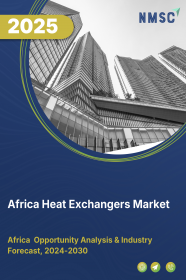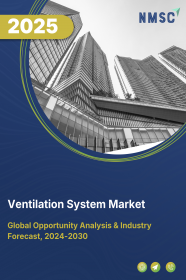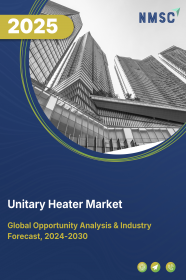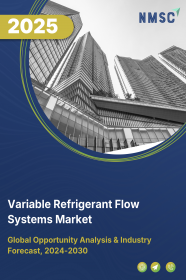
Africa Heat Exchangers Market by Type (Shell & Tube, Plate & Frame, Air Cooled, and Others), by Material (Metals, Alloys, and Brazing-CLAD), and by End User (Chemical, Energy & Power, Heating, Ventilation, Air Conditioning, and Refrigeration (HVACR), Food & Beverage, Pulp & Paper, and Others)– Opportunity Analysis and Industry Forecast, 2024–2030
Industry: Retail and Consumer | Publish Date: 22-Apr-2025 | No of Pages: 150 | No. of Tables: 108 | No. of Figures: 73 | Format: PDF | Report Code : RC1570
US Tariff Impact on Africa Heat Exchangers Market
Trump Tariffs Are Reshaping Global Business
Market Overview
The Africa Heat Exchangers Market size was valued at USD 229.0 million in 2023 and is predicted to reach USD 483.9 million by 2030, with a CAGR of 10.6% from 2024 to 2030.
Heat exchangers are intricate devices designed to transfer heat between fluids without direct contact, widely utilized across industrial, commercial, and residential domains, including HVAC systems and refrigeration units, to effectively regulate the temperature of fluids or air. Functioning by allowing heat to traverse barriers such as solid walls or arrays of plates or tubes, they undertake diverse tasks such as heating water in boilers or cooling air in air conditioning systems. Available in a variety of designs customized to specific requirements, ranging from basic radiator coils to intricate systems found in chemical processing plants and power generation facilities, they fulfill essential functions across numerous industries and applications.
These functions encompass regulating air temperature in buildings, facilitating steam production in power plants, controlling temperatures during chemical reactions, and assisting in food processing, among others. Moreover, they play crucial roles in automotive cooling systems and are extensively utilized in aerospace, marine, and wastewater treatment industries, contributing significantly to efficient thermal management and energy transfer.
Stringent Government Regulations Regarding Energy Efficiency Boost Africa’s Market Expansion
The stringent governmental regulations concerning energy efficiency are pivotal in driving the expansion of the heat exchangers market in Africa. With a firm commitment to curbing carbon emissions and advancing sustainable practices, authorities in Africa implement rigorous standards and regulations aimed at enhancing energy efficiency across diverse industries.
These regulations serve as incentives for businesses to invest in energy-efficient solutions, including heat exchangers, to curtail energy consumption and mitigate environmental impact. Consequently, the demand for heat exchangers in Africa is spurred by the imperative to adhere to these regulations, propelling market growth and fostering the widespread adoption of sustainable technologies on a national scale.
Growing Industrialization and Urbanization in Africa Drive Market Growth
The burgeoning industrialization and urbanization in Africa stand out as pivotal factors propelling the growth of the heat exchangers industry. As urban centers expand and industrial endeavors flourish, there emerges an escalating need for heat exchangers across diverse sectors encompassing manufacturing, construction, and residential expansions.
Critical industries including HVAC, chemical processing, power generation, and food processing lean heavily on heat exchangers to ensure adept thermal management and efficient energy transfer. This demand for such devices is further underscored by the growing emphasis on energy efficiency and sustainable methodologies, fueling the adoption of heat exchangers within Africa's dynamically evolving industrial landscape.
High Installation and Maintenance Costs Restrain Market Growth
The formidable hurdles of high installation and maintenance expenses serve as significant impediments to market growth in Africa. Although heat exchangers promise long-term advantages including energy efficiency and enhanced performance, the initial capital outlay for procuring and installing these systems can be substantial.
Moreover, the ongoing costs associated with maintenance, encompassing activities such as cleaning and repairs, further inflate the overall ownership expenditure. These elevated costs dissuade several businesses, particularly those with constrained financial resources, from embracing heat exchangers, thus curtailing market expansion.
To tackle this challenge, manufacturers and policymakers may need to explore avenues for mitigating installation and maintenance expenses. This could involve initiatives including incentivizing the adoption of energy-efficient technologies or implementing financial aid programs aimed at assisting businesses interested in investing in heat exchangers.
Integration with Renewable Energy Systems Creates a Market Opportunity
The integration of heat exchangers with renewable energy systems presents a notable market opportunity. With the rising demand for renewable energy sources including solar and geothermal power, heat exchangers assume a vital role in ensuring efficient heat transfer within these systems. They find application in various renewable energy contexts, including solar water heating, geothermal heat pumps, and biomass boilers, where they optimize energy efficiency and system performance.
The growing emphasis on sustainability and the transition towards clean energy sources further propel the demand for heat exchangers integrated into renewable energy frameworks. This trend not only broadens the market scope for heat exchangers but also contributes to the overall expansion of the renewable energy sector.
Competitive Landscape
Several market players operating in Africa’s heat exchangers market include Alfa Laval AB, Johnson Controls International plc, Carrier Global Corporation, Lennox International Inc., Trane Technologies plc, API Heat Transfer Inc., Kelvion Holding GmbH, Xylem Inc., Danfoss Group, and General Electric Company among others. These companies are adopting various strategies such as product launches to remain dominant in the heat exchangers market.
Key Market Segments
By Type
-
Shell & Tube
-
Fixed Tube Heat Exchangers
-
U-Tube Heat Exchangers
-
Floating Head Heat Exchangers
-
Other Shell & Tube Heat Exchangers
-
-
Plate & Frame Heat Exchangers
-
Gasketed Plate & Frame Heat Exchangers
-
Welded Plate & Frame Heat Exchangers
-
Brazed Plate & Frame Heat Exchangers
-
Other Plate & Frame Heat Exchangers
-
-
Air Cooled
-
Forced Draft Heat Exchangers
-
Induced Draft Heat Exchangers
-
-
Others
By Materials
-
Metals
-
Alloys
-
Brazing-CLAD
By End User
-
Chemical
-
Energy & Power
-
HVACR
-
Food & Beverage
-
Pulp & Paper
-
Others
By region
-
Africa
-
South Africa
-
Nigeria
-
Kenya
-
Egypt
-
Morocco
-
Ghana
-
Other Countries
-
Key Players
-
Alfa Laval AB
-
Johnson Controls International plc
-
Carrier Global Corporation
-
Lennox International Inc.
-
Trane Technologies plc
-
API Heat Transfer Inc.
-
Kelvion Holding GmbH
-
Xylem Inc.
-
Danfoss Group
-
General Electric Company
REPORT SCOPE AND SEGMENTATION:
|
Parameters |
Details |
|
Market Size in 2023 |
USD 229.0 Million |
|
Revenue Forecast in 2030 |
USD 483.9 Million |
|
Growth Rate |
CAGR of 10.6% from 2024 to 2030 |
|
Analysis Period |
2023–2030 |
|
Base Year Considered |
2023 |
|
Forecast Period |
2024–2030 |
|
Market Size Estimation |
Million (USD) |
|
Growth Factors |
|
|
Companies Profiled |
10 |
|
Market Share |
Available for 10 companies |
|
Customization Scope |
Free customization (equivalent up to 80 working hours of analysts) after purchase. Addition or alteration to country, regional, and segment scope. |
|
Pricing and Purchase Options |
Avail customized purchase options to meet your exact research needs. |

















 Speak to Our Analyst
Speak to Our Analyst





















